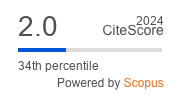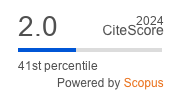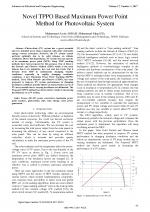| 3/2017 - 12 |
Novel TPPO Based Maximum Power Point Method for Photovoltaic SystemABBASI, M. A. |
| Extra paper information in |
| Click to see author's profile in |
| Download PDF |
Author keywords
DC-DC power converters, maximum power point trackers, photovoltaic cells, solar energy, solar power generation
References keywords
optimization(18), algorithm(18), artificial(13), colony(12), comput(8), jasoc(6), swarm(5), soft(5), search(5), jins(5)
No common words between the references section and the paper title.
About this article
Date of Publication: 2017-08-31
Volume 17, Issue 3, Year 2017, On page(s): 95 - 100
ISSN: 1582-7445, e-ISSN: 1844-7600
Digital Object Identifier: 10.4316/AECE.2017.03012
Web of Science Accession Number: 000410369500012
SCOPUS ID: 85028570193
Abstract
Photovoltaic (PV) system has a great potential and it is installed more when compared with other renewable energy sources nowadays. However, the PV system cannot perform optimally due to its solid reliance on climate conditions. Due to this dependency, PV system does not operate at its maximum power point (MPP). Many MPP tracking methods have been proposed for this purpose. One of these is the Perturb and Observe Method (P&O) which is the most famous due to its simplicity, less cost and fast track. But it deviates from MPP in continuously changing weather conditions, especially in rapidly changing irradiance conditions. A new Maximum Power Point Tracking (MPPT) method, Tetra Point Perturb and Observe (TPPO), has been proposed to improve PV system performance in changing irradiance conditions and the effects on characteristic curves of PV array module due to varying irradiance are delineated. The Proposed MPPT method has shown better results in increasing the efficiency of a PV system. |
| References | | | Cited By «-- Click to see who has cited this paper |
| [1] D. Karaboga, "An idea based on honey bee swarm for numerical optimization," Erciyes University, Kayseri, Turkey, Tech. Rep., TR06, 2005.
[2] J. Kennedy, R. Eberhart, "Particle swarm optimization," in 1995 IEEE international conference on neural networks proceedings, Vols. 1-6 pp. 1942-1948, 1995 [CrossRef] [3] M. Dorigo, V. Maniezzo, A. Colorni, "Ant system: Optimization by a colony of cooperating agents," IEEE Transactions on Systems Man and Cybernetics Part B, Cybernetics, 26(1), 1996, pp. 29-41. [CrossRef] [SCOPUS Times Cited 10635] [4] X. S. Yang, S. Deb, "Engineering optimization by cuckoo search," Int. J. Math. Model. Numer. Opt. 1, pp. 330-343, 2010 [5] X. S. Yang, "Firefly algorithm, stochastic test functions and design optimisation," International Journal of Bio-Inspired Computation, 2(2), pp. 78-84, 2010 [CrossRef] [SCOPUS Times Cited 2312] [6] Z. W. Geem, J. H. Kim, G. V. Loganathan, "A new heuristic optimization algorithm: Harmony search. Simulation," 76(2), pp. 60-68, 2001 [CrossRef] [SCOPUS Times Cited 5735] [7] Uymaz S. A. , Tezel G., Yel E., Artificial algae algorithm (AAA) for nonlinear global optimization, Applied Soft Computing, Volume 31, June 2015, pp. 153-171, ISSN 1568-4946, [CrossRef] [SCOPUS Times Cited 223] [8] H. M. Harmanani, F. Drouby, S. B. Ghosn, A parallel genetic algorithm for the open-shop scheduling problem using deterministic and random moves, International Journal of Artificial Intelligence, vol. 14, no. 1, pp. 130-144, 2016. [9] Z. C. Johanyák, O. Papp, "A hybrid algorithm for parameter tuning in fuzzy model identification," Acta Polytechnica Hungarica, vol. 9, no. 6, pp. 153-165, 2012. [10] R.-E. Precup, R.-C. David, E. M. Petriu, S. Preitl, M.-B. Radac, "Novel adaptive charged system search algorithm for optimal tuning of fuzzy controllers," Expert Systems with Applications, vol. 41, no. 4, pp. 1168-1175, 2014 [CrossRef] [SCOPUS Times Cited 82] [11] A. Basgumus, M. Namda, R, G. Yilmaz, A. Altuncu, "Performance comparison of the differential evolution and particle swarm optimization algorithms in free-space optical communications systems," Advances in Electrical and Computer Engineering, vol. 15, no. 2, pp. 17-22, 2015. [CrossRef] [Full Text] [SCOPUS Times Cited 14] [12] B. Akay, D. Karaboga, "A modified artificial bee colony algorithm for real-parameter optimization," Inf. Sci. 192, pp. 120-142, 2012 [CrossRef] [SCOPUS Times Cited 1082] [13] G. Zhu, S. Kwong, "Gbest-guided artificial bee colony algorithm for numerical function optimization," Appl. Math. Comput. 217, pp. 3166-3173, 2010 [CrossRef] [SCOPUS Times Cited 1242] [14] A. Banharnsakun, T. Achalakul, B. Sirinaovakul, "The best-so-far selection in artificial bee colony algorithm," Appl. Math. Comput. 11, pp. 2888-2901, 2011 [CrossRef] [SCOPUS Times Cited 416] [15] A. Banharnsakun, B. Sirinaovakul, T. Achalakul, "The best-so-far ABC with multiple patrilines for clustering problems," Neurocomputing 116, pp. 355-366, 2013 [CrossRef] [SCOPUS Times Cited 26] [16] W. Gao, S. Liu, L. Huang, "A global best artificial bee colony algorithm for global optimization," J. Comput. Appl. Math. 236 pp. 2741-2753, 2012 [CrossRef] [SCOPUS Times Cited 436] [17] M. S. Kiran, O. Findik, "A directed artificial bee colony algorithm," Appl. Soft Comput. 26, pp. 454-462, 2015 [CrossRef] [SCOPUS Times Cited 207] [18] W. Gao, S. Liu, "A modified artificial bee colony algorithm," Comput. Oper. Res. 39, pp. 687-697, 2012 [CrossRef] [SCOPUS Times Cited 617] [19] D. Karaboga, B. Gorkemli, "A quick artificial bee colony (qABC) algorithm and its performance on optimization problems," Appl. Soft Comput. 23, pp. 227-238, 2014 [CrossRef] [SCOPUS Times Cited 311] [20] N. Imanian, M.E. Shiri, P. Moradi, "Velocity based artificial bee colony algorithm for high dimensional continuous optimization problems," Eng. Appl. Artif. Intell. 36, pp. 148-163, 2014 [CrossRef] [SCOPUS Times Cited 71] [21] W. Du, B. Li "Multi-strategy ensemble particle swarm optimization for dynamic optimization," Inform. Sci., 178 (15), pp. 3096-3109, 2008 [CrossRef] [SCOPUS Times Cited 237] [22] R. Mallipeddi, S. Mallipeddi, P.N. Suganthan, "Ensemble strategies with adaptive evolutionary programming," Inform. Sci., 180 (9), pp. 1571-1581, 2010 [CrossRef] [SCOPUS Times Cited 118] [23] R. Mallipeddi, P.N. Suganthan, "Ensemble of constraint handling techniques," IEEE Trans. Evolut. Comput., 14(4), , pp. 561-579, 2010 [CrossRef] [SCOPUS Times Cited 431] [24] R. Mallipeddi, P.N. Suganthan, Q.K. Pan, M.F. Tasgetiren, "Differential evolution algorithm with ensemble of parameters and mutation strategies," Appl. Soft Comput., 11(2), , pp. 1679-1696, 2011 [CrossRef] [SCOPUS Times Cited 1264] [25] H. Wang, Z. Wu, S. Rahnamayan, H. Sun, Y. Liu, J. Pan, "Multi-strategy ensemble artificial bee colony algorithm," Inf. Sci. 279, pp. 587-603, 2014 [CrossRef] [SCOPUS Times Cited 276] [26] M. S. Kiran, H. Hakli, M. Gunduz, H. Uguz, "Artificial bee colony algorithm with variable search strategy for continuous optimization," Information Sciences 300, pp. 140-157, 2010 [CrossRef] [SCOPUS Times Cited 249] [27] W. Gao, S. Liu, L. Huang, "A novel artificial bee colony algorithm based on modified search equation and orthogonal learning," IEEE T. Syst. Man Cy. B, 2012, [CrossRef] [SCOPUS Times Cited 414] [28] P. N. Suganthan, N. Hansen, J.J. Liang, K. Deb, Y.-P. Chen, A. Auger, S. Tiwari, "Problem definitions and evaluation criteria for the CEC 2005 special session on real parameter optimization," Technical report, 2005005, ITT Kanpur, India, 2005. [29] V. Muthiah-Nakarajan, M. M. Noel, "Galactic Swarm Optimization: A new global optimization metaheuristic inspired by galactic motion," Applied Soft Computing, Volume 38, January 2016, Pages 771-787, ISSN 1568-4946, [CrossRef] [SCOPUS Times Cited 168] Web of Science® Citations for all references: 0 SCOPUS® Citations for all references: 26,566 TCR Web of Science® Average Citations per reference: 0 SCOPUS® Average Citations per reference: 886 ACR TCR = Total Citations for References / ACR = Average Citations per Reference We introduced in 2010 - for the first time in scientific publishing, the term "References Weight", as a quantitative indication of the quality ... Read more Citations for references updated on 2025-06-30 18:44 in 159 seconds. Note1: Web of Science® is a registered trademark of Clarivate Analytics. Note2: SCOPUS® is a registered trademark of Elsevier B.V. Disclaimer: All queries to the respective databases were made by using the DOI record of every reference (where available). Due to technical problems beyond our control, the information is not always accurate. Please use the CrossRef link to visit the respective publisher site. |
Faculty of Electrical Engineering and Computer Science
Stefan cel Mare University of Suceava, Romania
All rights reserved: Advances in Electrical and Computer Engineering is a registered trademark of the Stefan cel Mare University of Suceava. No part of this publication may be reproduced, stored in a retrieval system, photocopied, recorded or archived, without the written permission from the Editor. When authors submit their papers for publication, they agree that the copyright for their article be transferred to the Faculty of Electrical Engineering and Computer Science, Stefan cel Mare University of Suceava, Romania, if and only if the articles are accepted for publication. The copyright covers the exclusive rights to reproduce and distribute the article, including reprints and translations.
Permission for other use: The copyright owner's consent does not extend to copying for general distribution, for promotion, for creating new works, or for resale. Specific written permission must be obtained from the Editor for such copying. Direct linking to files hosted on this website is strictly prohibited.
Disclaimer: Whilst every effort is made by the publishers and editorial board to see that no inaccurate or misleading data, opinions or statements appear in this journal, they wish to make it clear that all information and opinions formulated in the articles, as well as linguistic accuracy, are the sole responsibility of the author.



